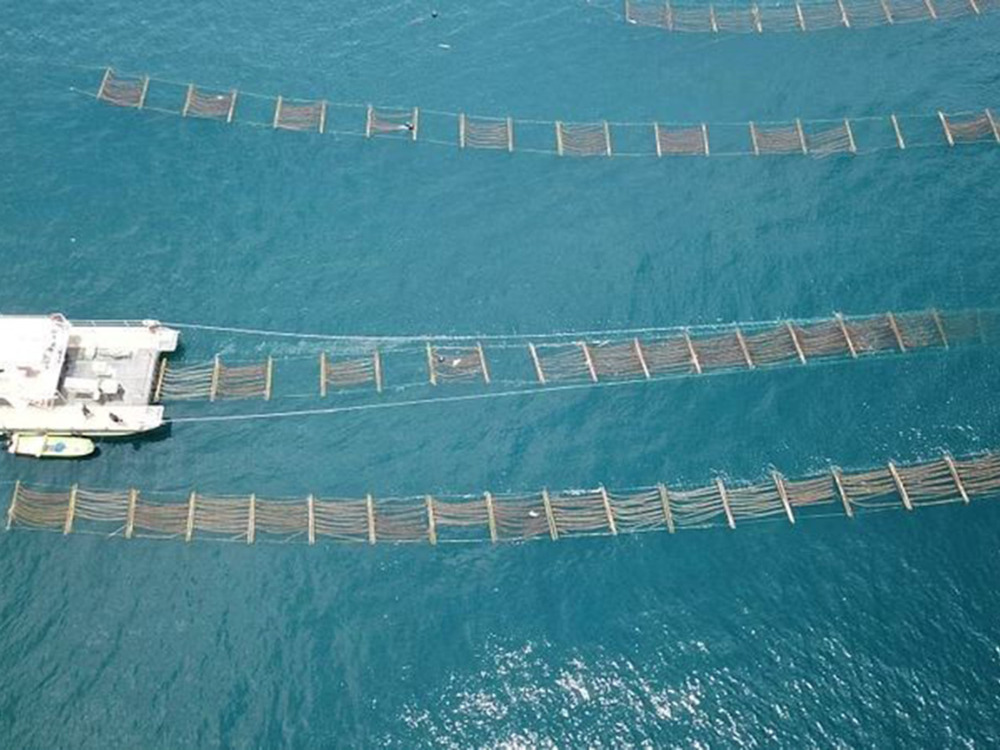Disclosure: AFN’s parent company, AgFunder, is an investor in Propagate.
Background: Agroforestry at a glance
Agroforestry involves integrating trees and shrubs into crop and animal farming. The goal of agroforestry is to improve soil health and wildlife habitat and it is seen as a regenerative agriculture practice.
- Bigger-picture aims of agroforestry are to increase biodiversity and boost farmers’ and landowners’ incomes.
- Common examples of agroforestry include silvopasture, which combines trees with livestock production, and alley cropping, where crops grow alongside long-term tree crops.
- The United States Department of Agriculture also names windbreaks, buffers, and forest farming as common practices.
- Because of its ability to sequester carbon, agroforestry is also considered an important new tool for climate change adaption and mitigation.
How Propagate works:
Propagate offers a software, development, and financing platform to assist farmers with the transition to agroforestry practices. The company currently focuses on integrating fruit, nut, and timber trees into existing farm operations.
- “Our software products are aimed at going from a design on a computer screen to actually implementing and managing an agroforestry farm and all of the technical services and resources required along that journey,” co-founder and CEO Ethan Steinberg tells AFN.
- Propagate tools and services include planning and management software called Overyield. The SaaS-based tool helps farmers choose crops and design tree-crop systems that work in tandem with existing farm operations.
- Propagate Management addresses commercial agroforestry development.
- Agroforestry Partners is a project finance vehicle and part of the overall Propagate platform. It provides equity investments for agroforestry transition.
- Currently, Propagate advises over 20,000 acres of agroforestry including 760,000 trees and shrubs. The company also actively manages over 480 commercial acres, and growing, through its regional agroforestry hubs.
Why it matters:
Steinberg says farmers face three major hurdles to implementing agroforestry in their operations:
- Farm design, including where and how to plant trees along with other agronomic details
- Implementation of crops such as procuring nursery stock, tree establishment and farm maintenance
- Financing to help cover the upfront operating expenses (opex) and capital expenditures (capex).
Farmers and landowners can access information on these things via the Propagate platform, making it easier to determine what to plant and how to juggle that process alongside existing work on the farm. This transparency can mitigate some of the risks, financial or otherwise, farmers face transitioning to agroforestry.
“If you’re at the farm gate, you can make an educated decision about what the forward-looking plan looks like, if you’re looking at a 30-year window,” says Steinberg. “Service providers can actually support what’s happening on the ground by having a bit more clarity on the opex and capex requirements to plan and manage tree crops alongside an operational farm.”

What’s next:
Climate-focused technologies continue to see investment despite the current tech downturn. Agroforestry being very much a part of the climate-tech narrative, Propagate was able to leverage agroforestry’s unique climate-mitigation narrative when it came to fundraising in a tough market.
“There’s more efficiency on the agroforestry side, [and] the costs are less aggressive than other climate solutions,” explains Steinberg. “We’ve been lucky to have really strong investors at table, both from our seed round and [the Series A] round. They have a lot of conviction about where we’re going because of the very end-to-end or holistic approach we take as a business.”
Propagate will invest the Series A funding in product upgrades and “making sure that the entire experience for a customer is as strong as possible.”
The company will also add to its team, primarily experts in asset management and carbon.
Propagate will continue working with its current range of tree and crop types that include shrub fruits and chestnut and timber trees. The company is also working on Mediterranean and tropical crops, with plans to expand to address global forestry needs in the future.
Source link
Author Jennifer Marston


![Megyn Kelly’s 58-Year-Old Sister Suddenly and Unexpectedly Dies over the Weekend [VIDEO] Megyn Kelly’s 58-Year-Old Sister Suddenly and Unexpectedly Dies over the Weekend [VIDEO]](https://www.redvoicemedia.com/wp-content/uploads/2022/10/2022.10.24-09.32-redvoicemedia-6357045eceff4.jpg)


